How to keep a bathroom warm without heating – 7 surprising ways to keep this space cozy, including using a bigger showerhead and pre-heating your towels
These simple hacks will make getting out of a warm shower a little more bearable this winter
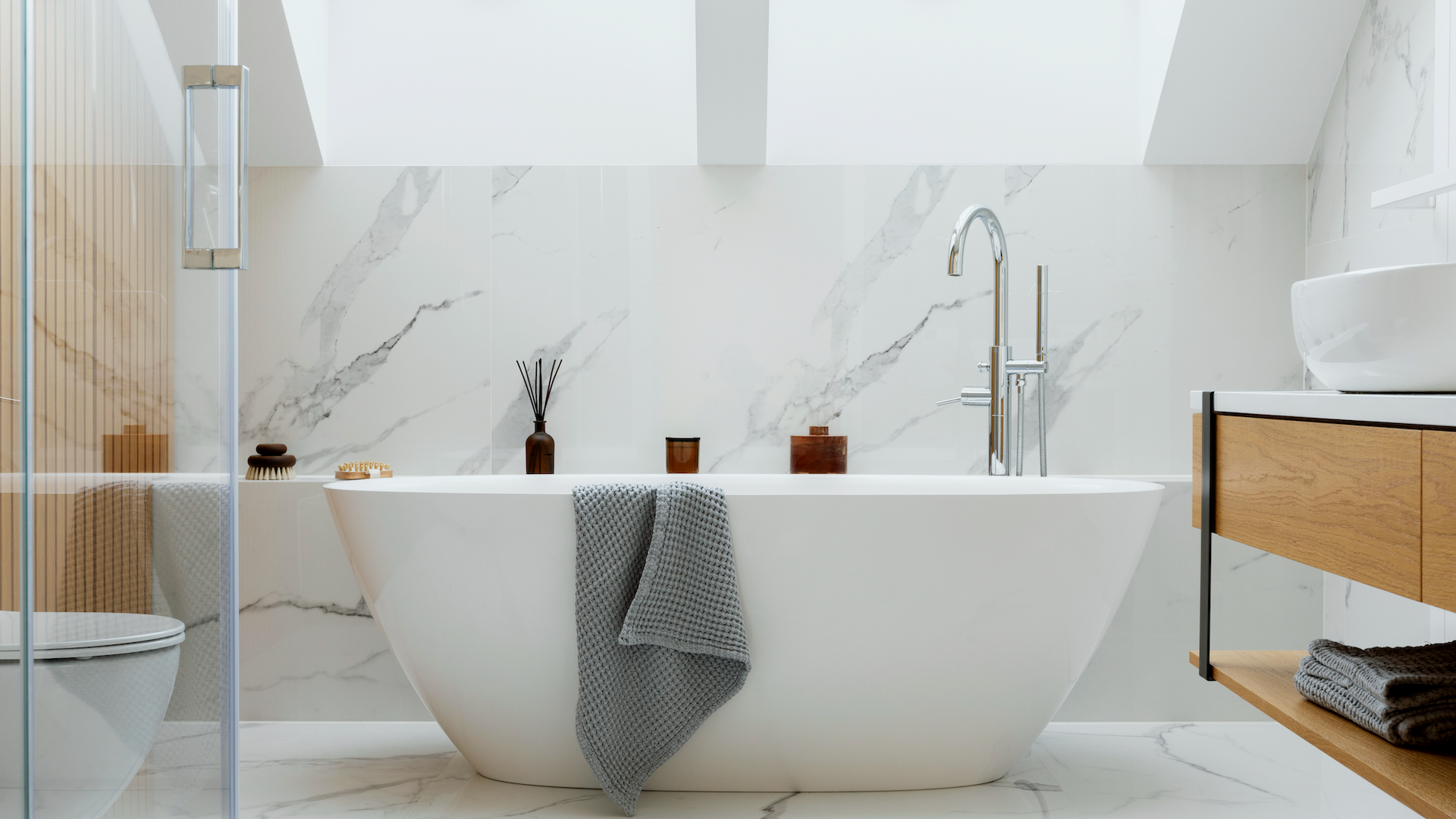

Although we don’t spend a lot of time relaxing in our bathrooms, stepping out of a warm shower into a chilly room – especially in winter – can be pretty uncomfortable.
With more households looking for ways to save on heating costs, keeping the bathroom warm doesn’t always top the priority list. Luckily, there are plenty of ways to keep a bathroom warm without heating in winter to make bath time a little more enjoyable.
Here, experts share seven effective ways to keep your bathroom warm without turning up the heat, allowing you to focus your energy use on the rooms where you spend more time and save money at home.
How to keep a bathroom warm without heating in winter
Keeping a house warm without turning up the heat can be tricky, but not impossible. All it boils down to is keeping as much hot air trapped inside as possible which, in a bathroom, is arguably easier than in other areas of your home thanks to steamy showers. The trick is stopping tiled surfaces sucking it all up.
Here's what the experts recommend to make a bathroom cozy without the cost.
1. Maintain a higher humidity
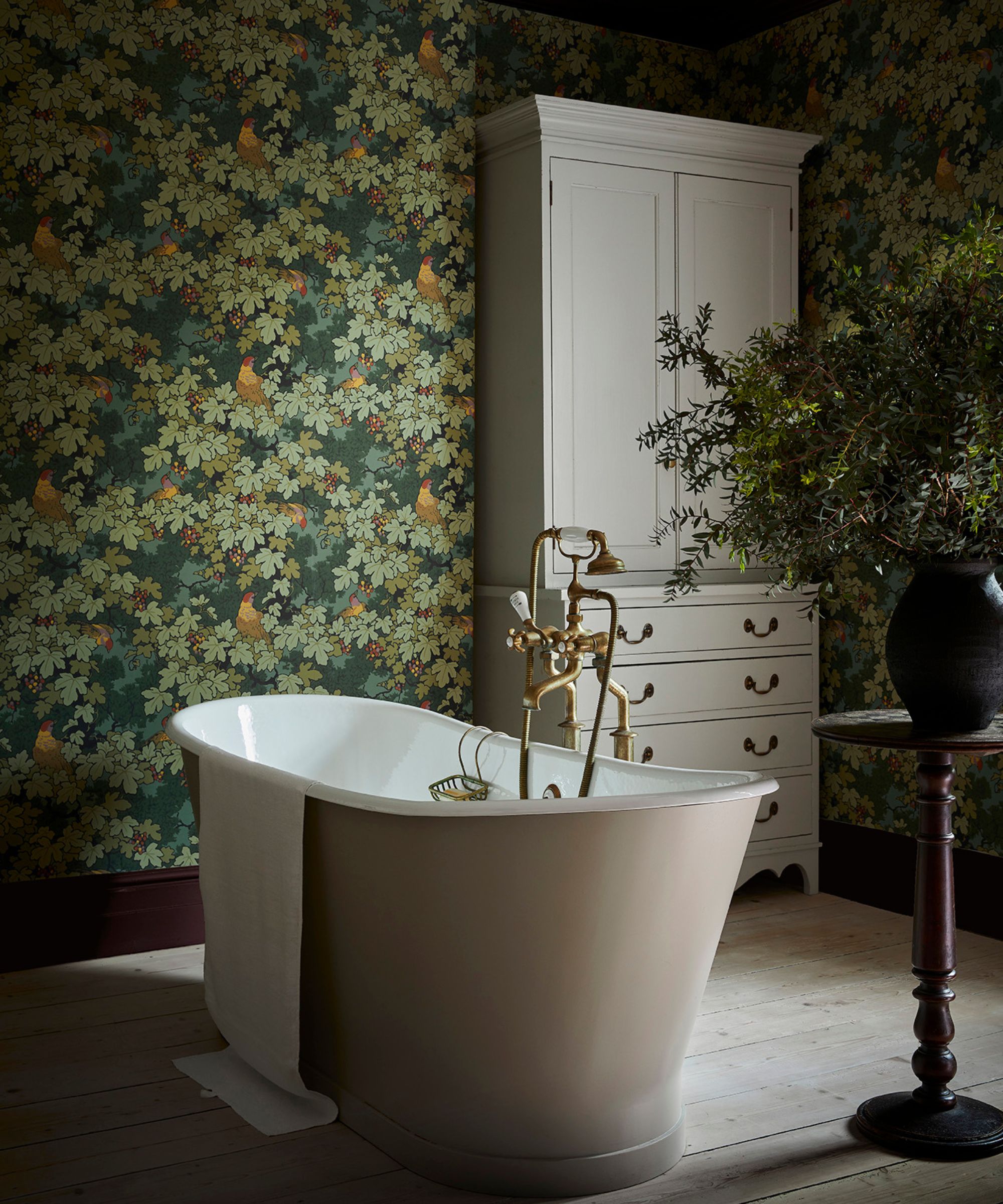
Bathrooms are naturally humid environments. While this can prove an issue if air moisture levels are left too high for too long, in the short term, it can help to make a bathroom feel warmer without heating.
This can be achieved by trapping in humid air after a shower, adding a humidifier, or picking up some of the best bathroom plants for high humidity suggests James Roberts, director at Sanctuary Bathrooms
He says, 'You might consider snake plants, as they require little maintenance, or eucalyptus as they can be hung in the shower whilst it runs to release essential oils, which also acts as a great decongestant. A heart-leaf philodendron [available at Amazon] is also perfect as this plant loves to be kept in damp, humid environments and is great for adding a touch of greenery to your bathroom shelves.'
Be wary of the signs of mold developing in high-humidity spaces, however. Most bathrooms will be decorated with tile, or specialized bathroom paint created to resist mold and mildew however excessive levels of moisture can still cause issues. If you suspect your bathroom is starting to suffer from dampness, then reversing the humidification process with a dehumidifier is more advantageous than trying to keep the space warm all the time.
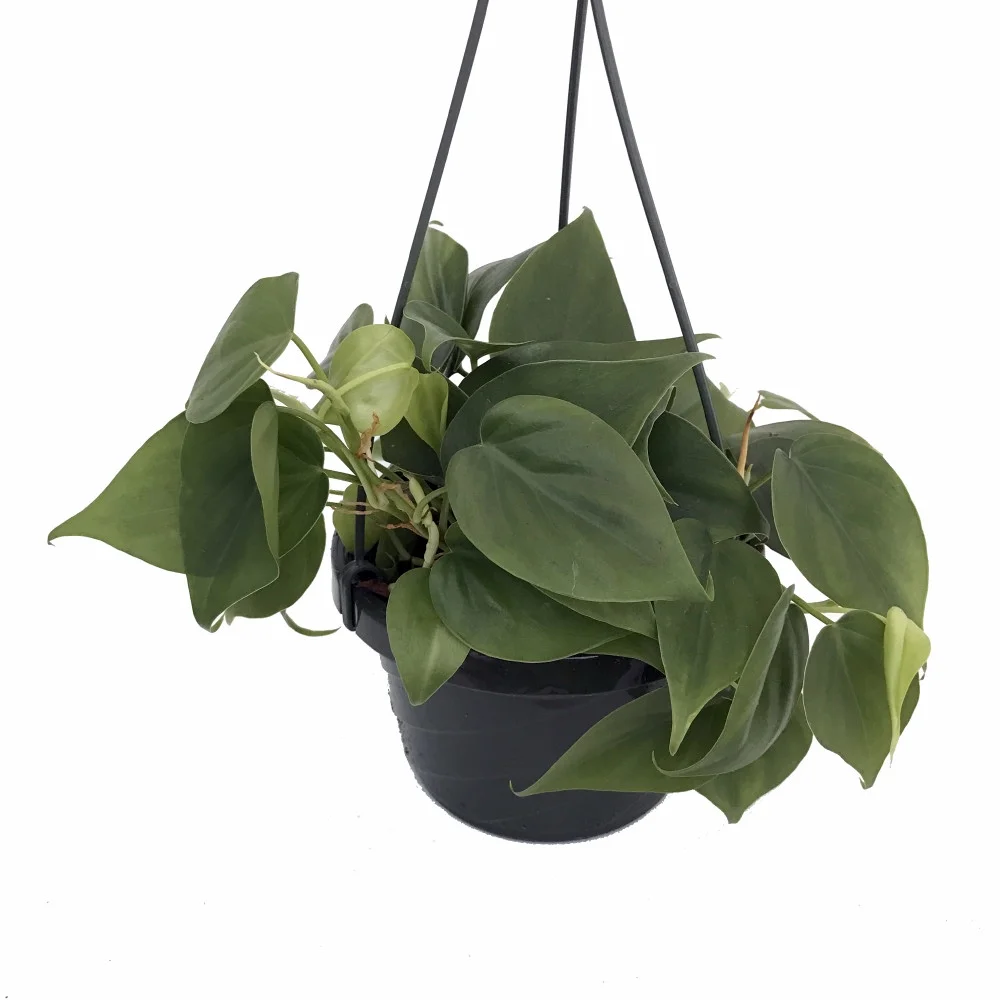
Heart Leaf Philodendron's are typically very easy to grow, thriving even in low light environments and high humidity
2. Add bathroom-suitable window dressings
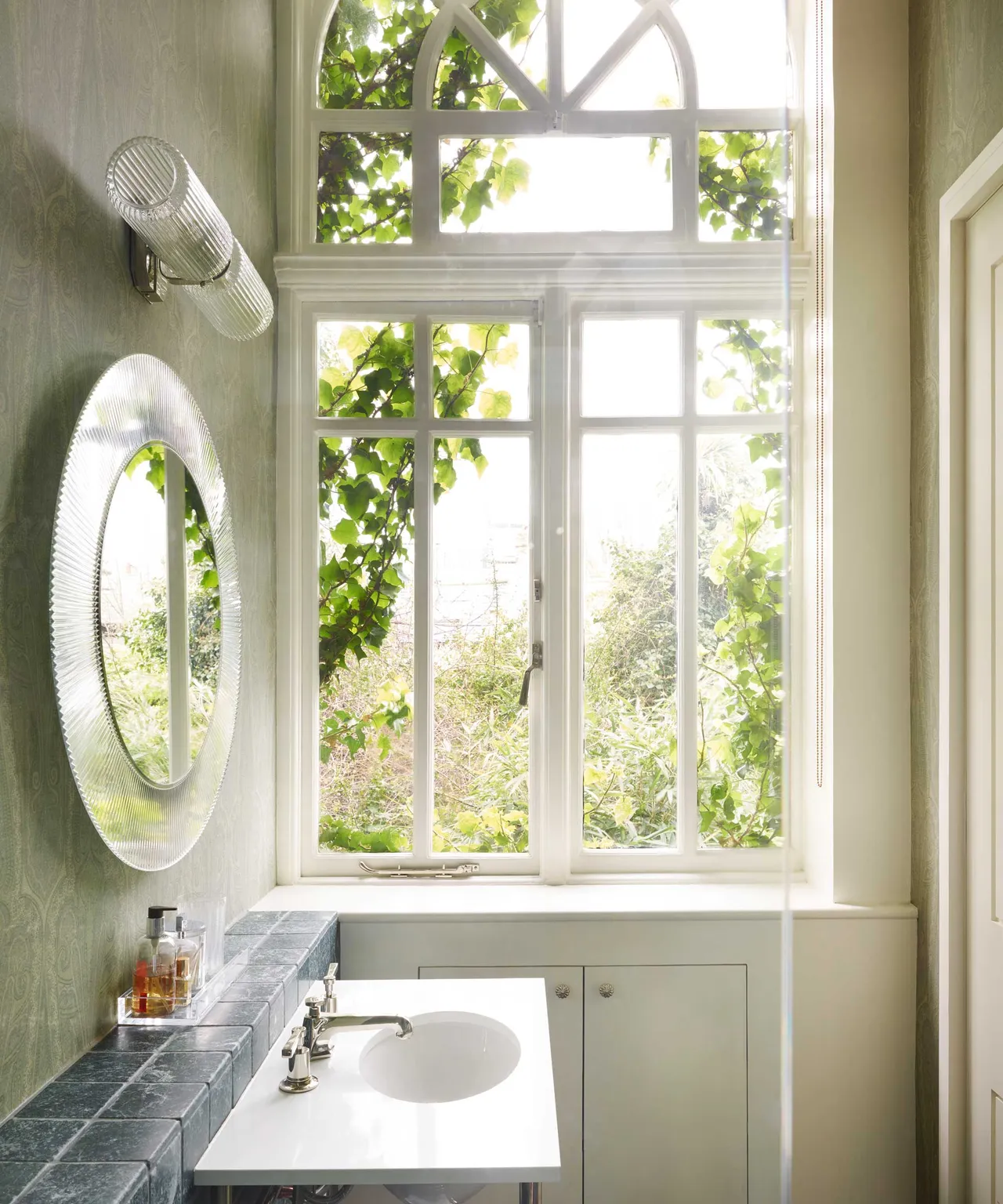
Bathroom window treatments are just as effective in the bathroom as they are when keeping a living room warm without heating. However, it isn't as simple as hanging up a thick pair of blackout curtains – especially if you have a small space and the room is particularly moist.
The trick is to use the right materials, such as wooden shutters, to prevent damp fabric.
Sam Tamlyn, managing director at California Shutters says, 'A window dressing in the bathroom such as shutters not only looks great but is a good way to prevent heat loss. As shutters are fitted bespoke to the window, when their slats are closed, very little air escapes through them, meaning they are great heat insulators, resulting in a warmer bathroom space. Self-install shutters [such as the top-rated Suncraft Shutters at Amazon] are a great solution to this as they are straightforward to fit and they won’t break the bank.’
If you are looking for a quicker, less permanent fix, you could use something like thermal window film, available at Amazon. This can be cut to size and stuck over a window to add an extra layer of thermal insulation to stop heat transfer. Some even offer you a little extra bathroom privacy too.
When using full window coverings, remember to open them up when the sun is shining on your bathroom to allow the rays to naturally warm up the space, and close them when the sun moves or sets to trap the heat in.
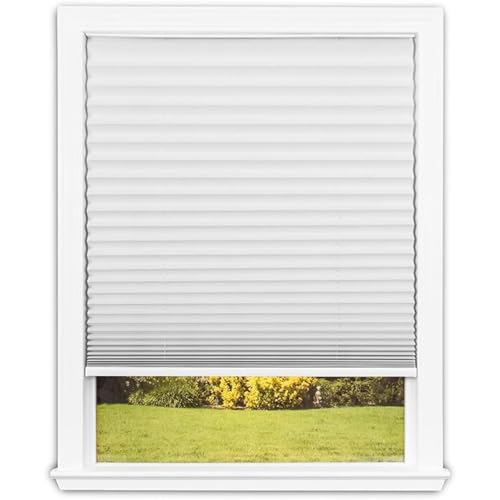
Shutters can prove an expensive addition to your bathroom, even when installing them yourself. For a cost effective alternative, consider a fabric shade that is cut to fit snuggly against your windows to prevent cold air leaks
3. Install warming light bulbs
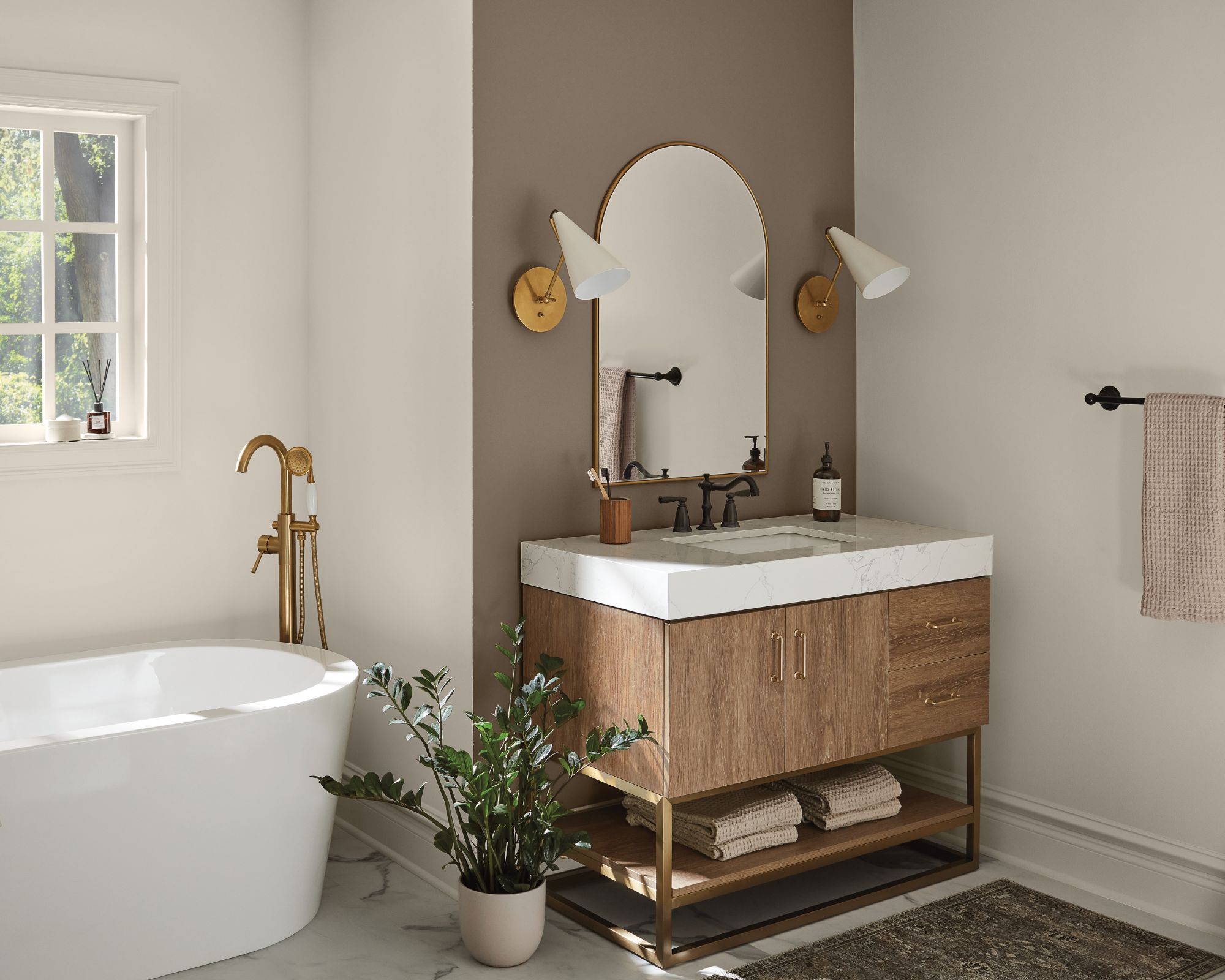
If you want to heat up certain parts of your bathroom, such as in the shower, or the area you dry off and get dressed afterward, then consider switching up your bathroom lighting to infrared bulbs.
These heating light bulbs will warm up the area below them, helping to save on energy costs without sacrificing comfort. When installing infrared light bulbs, such as the Fengrun Infrared Bulb from Amazon which has a warm white tone as opposed to bright red, ensure they are safety-rated for use in bathrooms and high-humidity areas to avoid fire risks.
All prices correct at time of publication.
4. Install draft-proofing strips
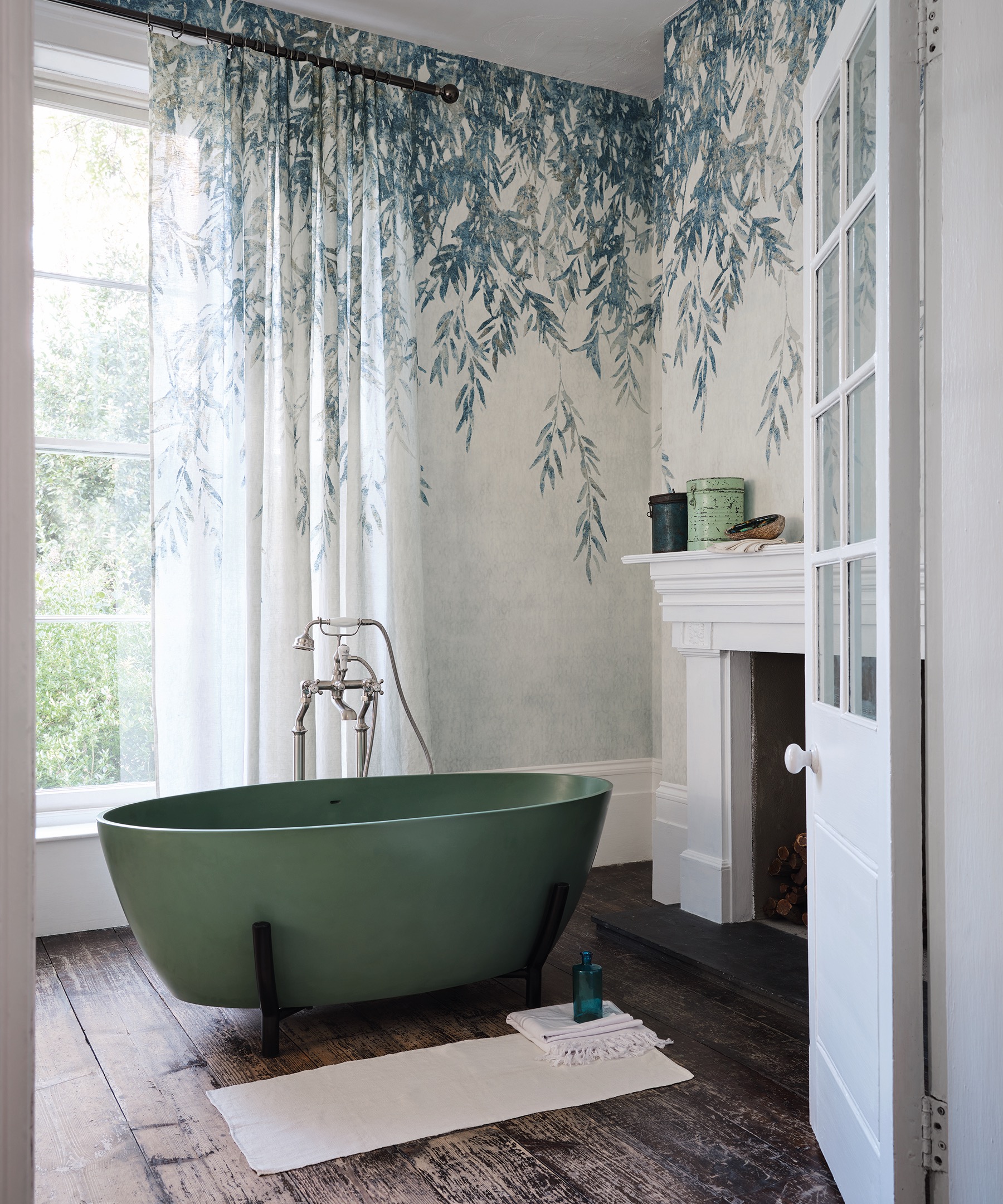
One of the best ways to stop heat transfer between rooms and keep your bathroom feeling warmer is to draf-proof a bathroom. Rather than using traditional draft excluders which could get moldy in high humidity rooms, consider using draft strips instead suggests Laurence Booth-Clibborn of commercial at-home comforts brand Kudd.ly.
He says, ‘To stop cold air from entering your home, try to block off any particularly colder areas, usually where windows and doors are located. Draft-proof strips are a cost-effective way to keep warm within your home to stay cozy.'
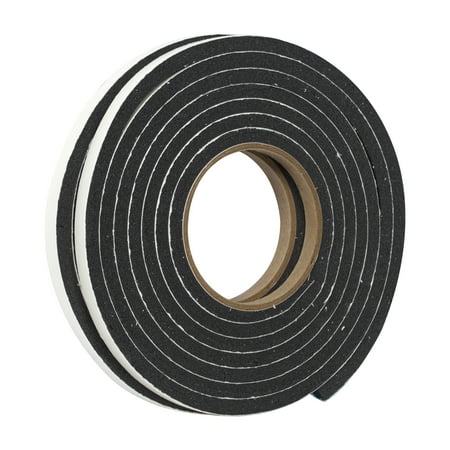
Stick a line of insulating foam around doors for a tighter seal, trapping warm air in your bathroom and keeping cold drafts locked out
5. Use a larger shower head
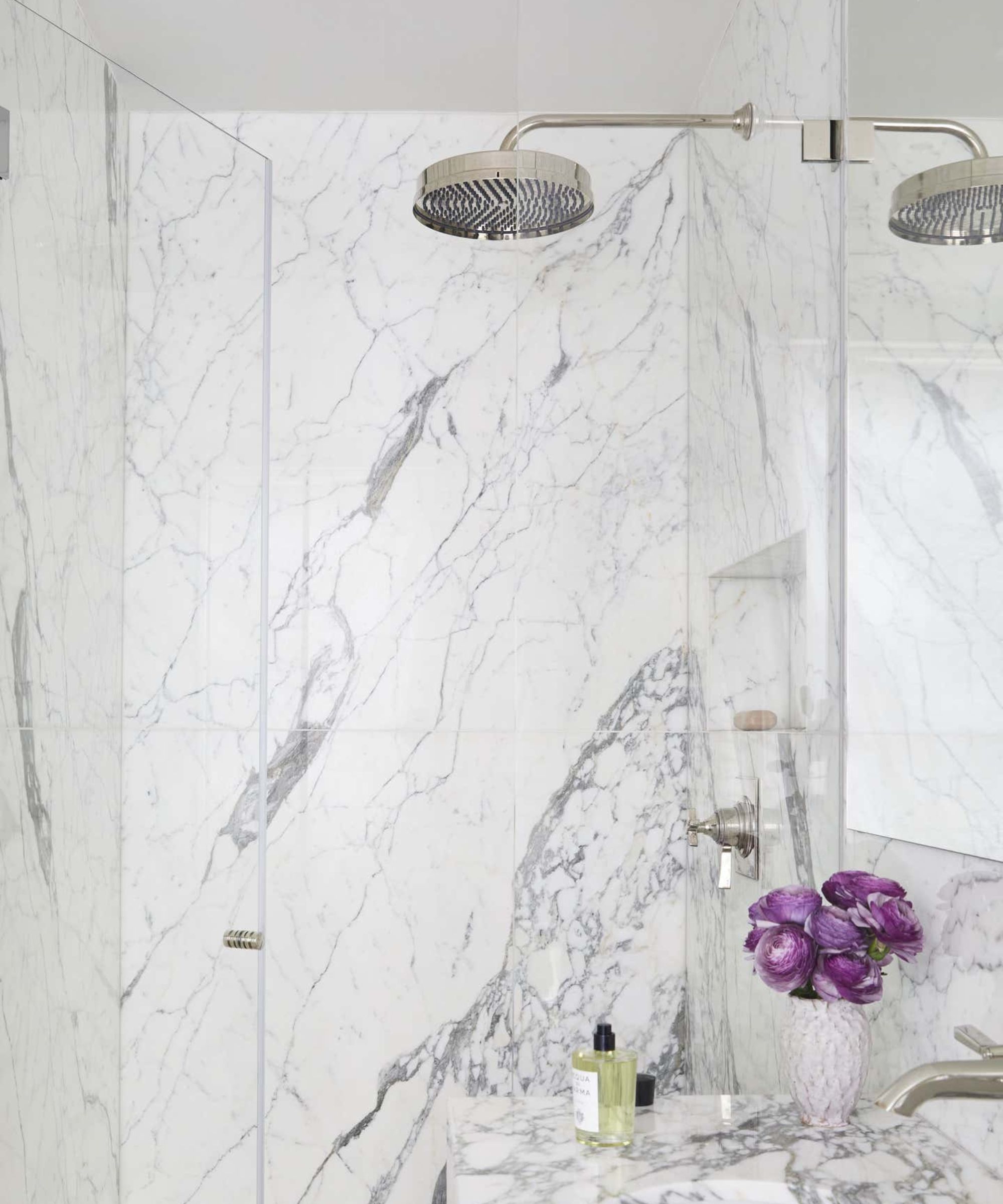
When choosing a shower, we usually focus on water pressure and aesthetics over anything else. However, picking a larger showerhead might have benefits in very cold winters.
Millie Hurst, Solved contributor for H&G explains, 'Changing to an over-sized showerhead that disperses hot water widely will engulf you in warm water as you bathe and help you stay warmer and more comfortable in the shower.'
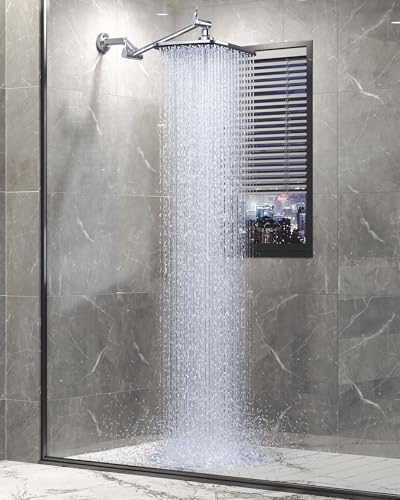
Swapping out your current shower head to a large waterfall head will not only help to keep you warm, but will instantly make a shower look more expensive too. What's not to like?
6. Layer soft furnishings
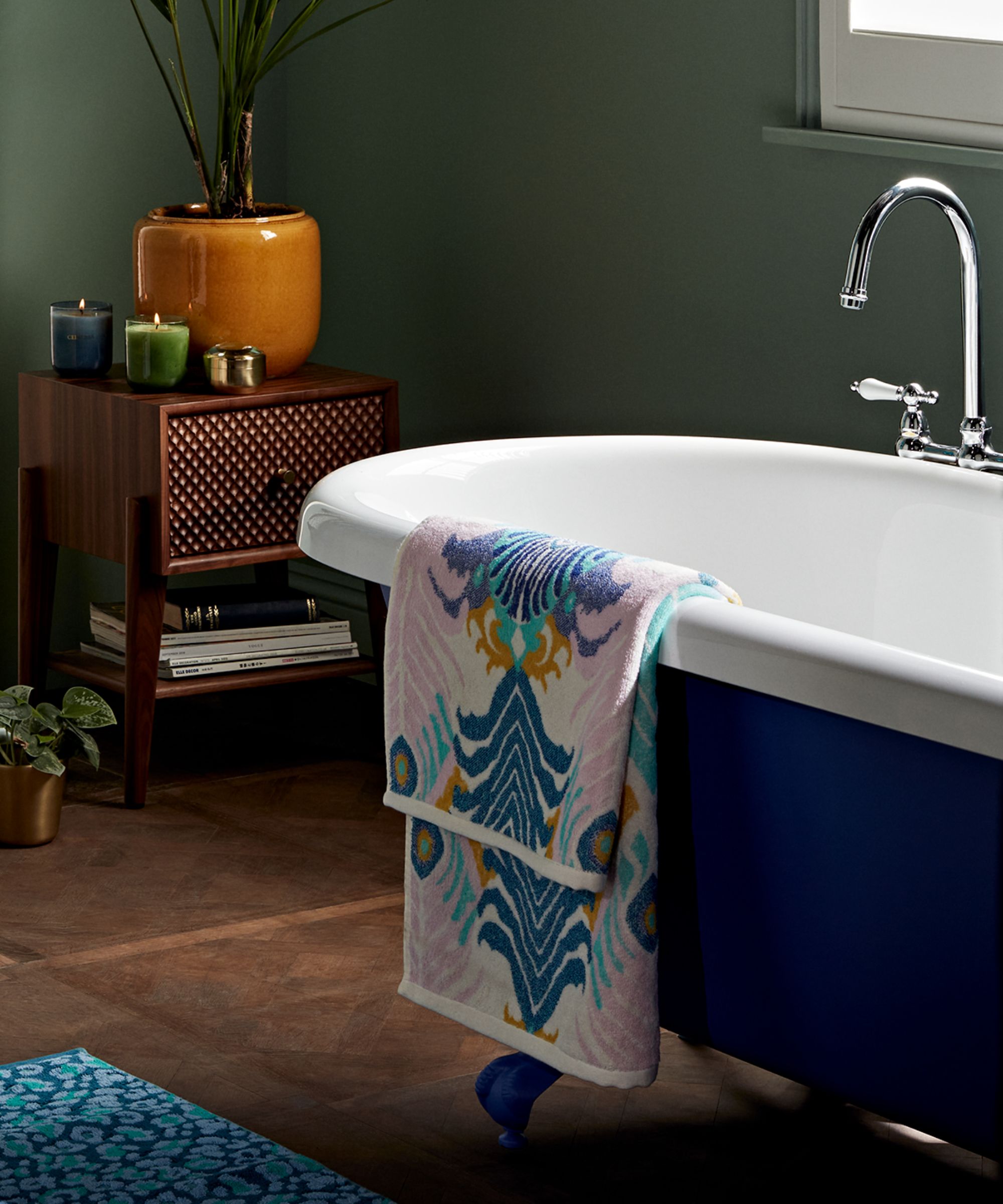
Adding soft furnishings to a space is something you might expect to hear more when trying to keep a bedroom warm without heating rather than the bathroom, but layering textiles can have a warming, insulating effect on any space.
Designer Jemma Paugh of JC Design says, ‘At this time of year bathrooms can be incredibly cold and far from inviting. Use as many soft materials as possible to warm the space. An over-sized bath mat or rug on the floor, curtains or blinds at the windows, and turn the lights off and have some cozy candles.’
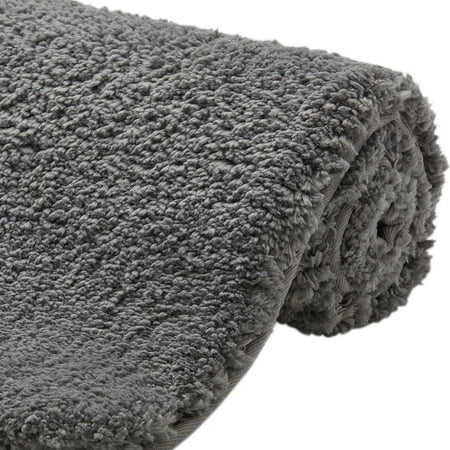
This super soft, fluffy bathmat is machine washable, making it super easy to wash a bathmat and keep your shower space sanitary
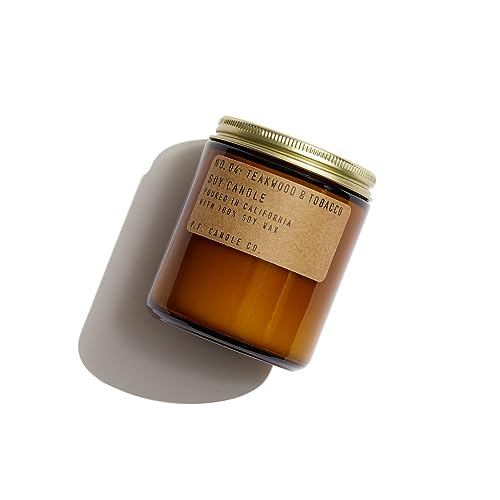
The P.F. Candle Co. candles are made from pure soy wax and natural fragrances, making them some of the healthiest candles to burn in your home
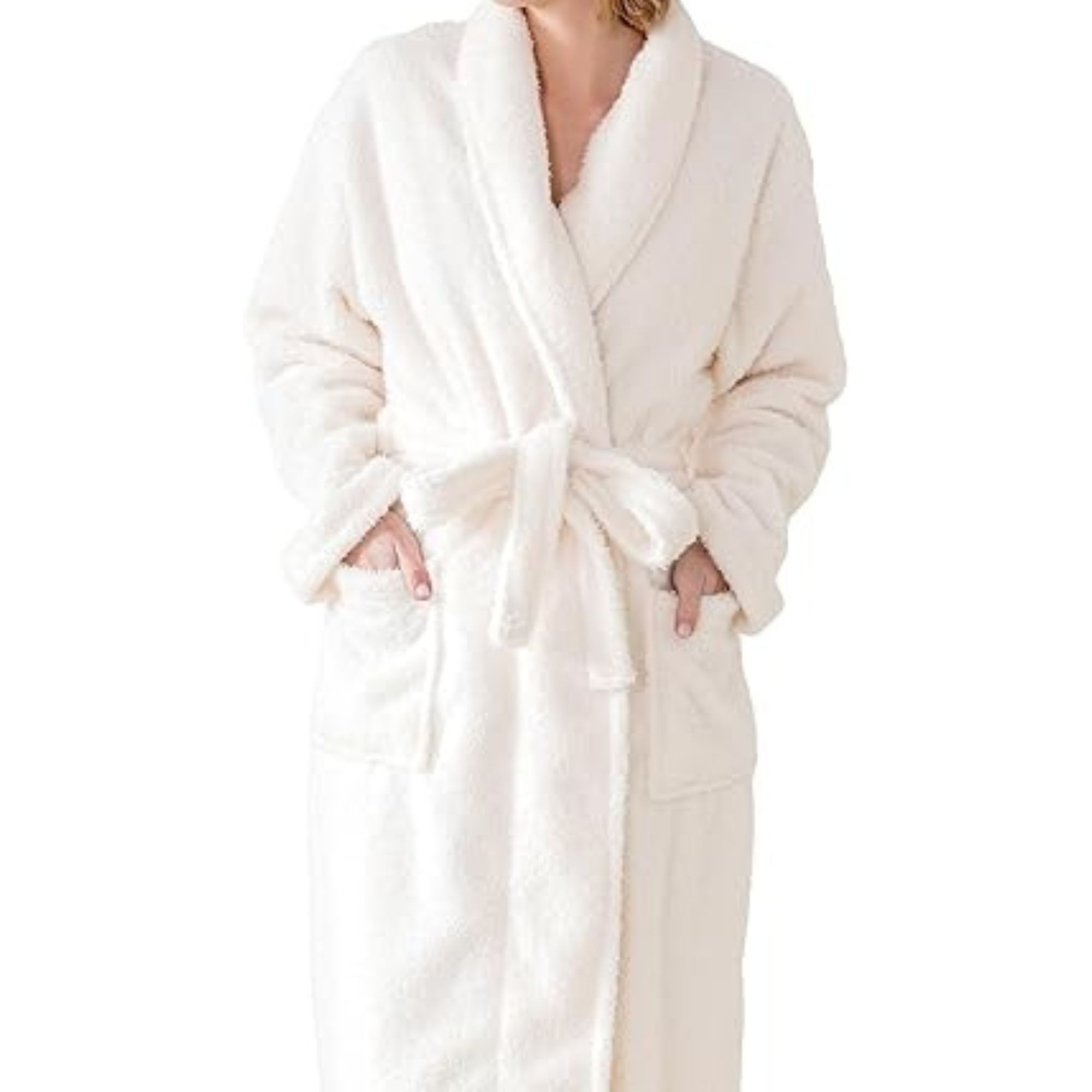
When working with a cold bathroom, you need a bathrobe to fend it off. Wrap up in a bathrobe you have preheated straight after a shower to trap warmth and feel extra cozy
7. Preheat your towels before bathing
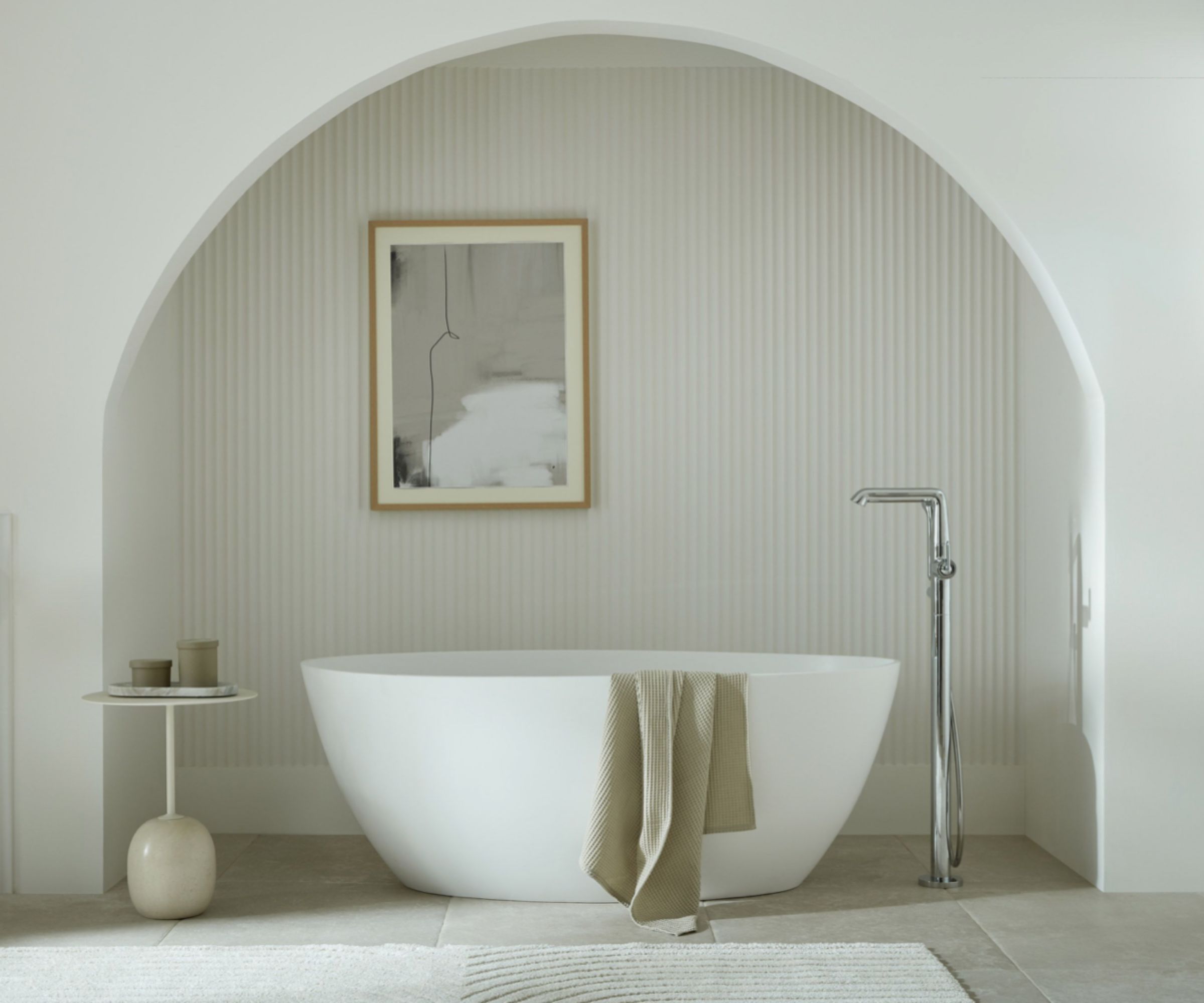
If you are choosing to turn your bathroom heating off in favor of more efficiently heating more regularly used spaces, then preheating your towels in another room can help make getting out of the shower or bath a little more bearable.
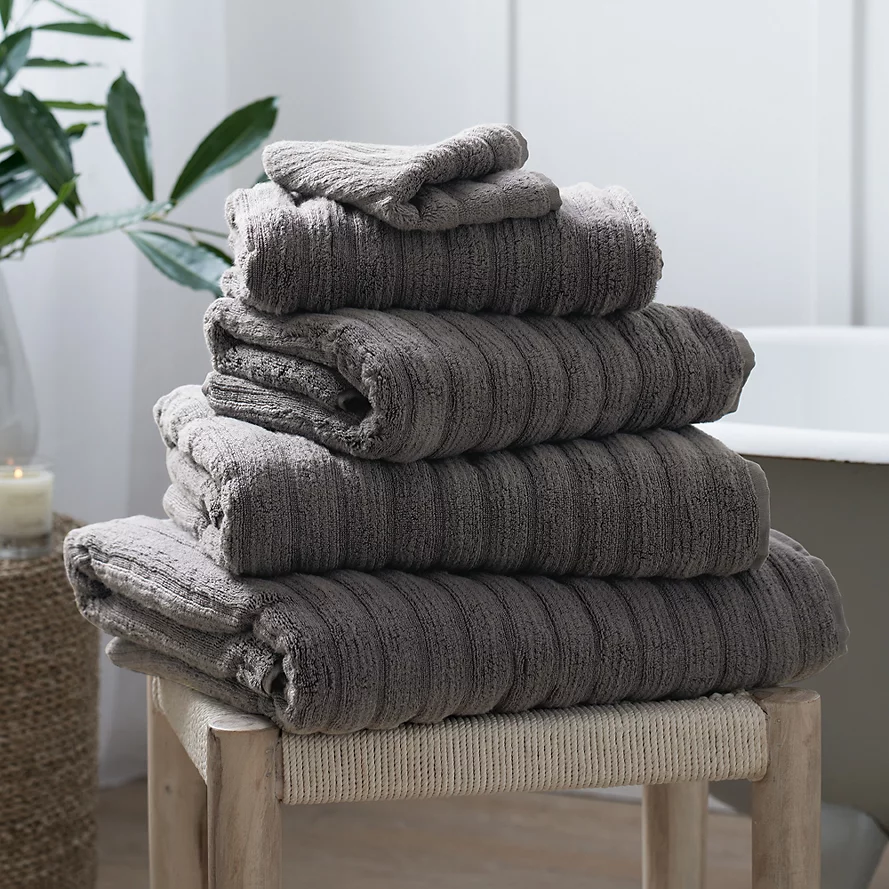
An all-time bestseller, these cotton towels are made in Turkey using clever ‘low-twist’ technology, which means they feel supremely fluffy and dry more quickly. We think they are great for busy households, children and those who love a comforting texture.
There you have it. These seven tips will take the edge of showering and bathing in the cold depths of winter, and keep goose pimples at bay.
Next, learn how to keep a home warm all day.
Sign up to the Homes & Gardens newsletter
Design expertise in your inbox – from inspiring decorating ideas and beautiful celebrity homes to practical gardening advice and shopping round-ups.

Chiana has been at Homes & Gardens for two years and is our resident 'queen' of non-toxic living. She spends most of her time producing content for the Solved section of the website, helping readers get the most out of their homes through clever decluttering, cleaning, and tidying tips. She was named one of Fixr's top home improvement journalists in 2024.
-
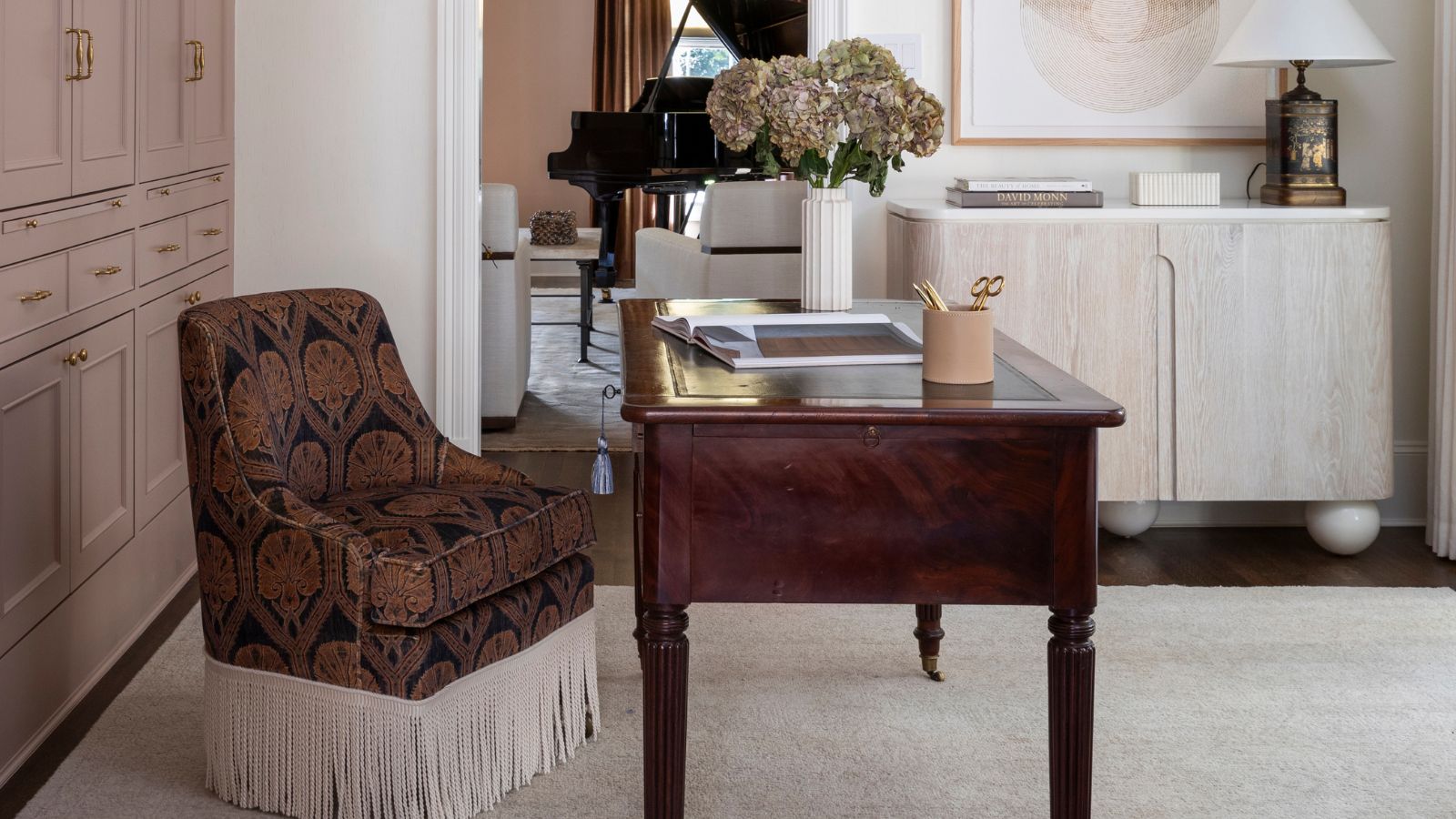 The rumours are true, the NYC trend for fringes and trimmings is actually happening – they are the secret weapon for making a room look expensive
The rumours are true, the NYC trend for fringes and trimmings is actually happening – they are the secret weapon for making a room look expensiveA trim or a ruffle is the finishing touch that can take a scheme from ordinary to the extraordinary in an instant
By Jennifer Ebert Published
-
 How to grow impatiens – garden experts reveal the secrets to growing this shade-tolerant, sparkling summer plant
How to grow impatiens – garden experts reveal the secrets to growing this shade-tolerant, sparkling summer plantBoth 'Busy Lizzie' and 'New Guinea' impatiens can thrive in shady yards
By Ellen Wells Published
-
 The 5 worst things you can do to your fridge – these will drive up energy costs and result in pricey and regrettable repairs
The 5 worst things you can do to your fridge – these will drive up energy costs and result in pricey and regrettable repairsIt's crucial to swerve these blunders, appliance experts warn
By Ottilie Blackhall Published
-
 Extend the lifespan of your appliance with 5 simple but crucial washing machine maintenance tips
Extend the lifespan of your appliance with 5 simple but crucial washing machine maintenance tipsFrom cleaning the filters to keeping the door open, experts reveal the washer tips they swear by
By Andy van Terheyden Published
-
 5 vital ways a home battery backup can help with your most urgent needs in a power outage – from heating to flood prevention and calls
5 vital ways a home battery backup can help with your most urgent needs in a power outage – from heating to flood prevention and callsExperts say they're a worthy investment
By Clement Feng Published
-
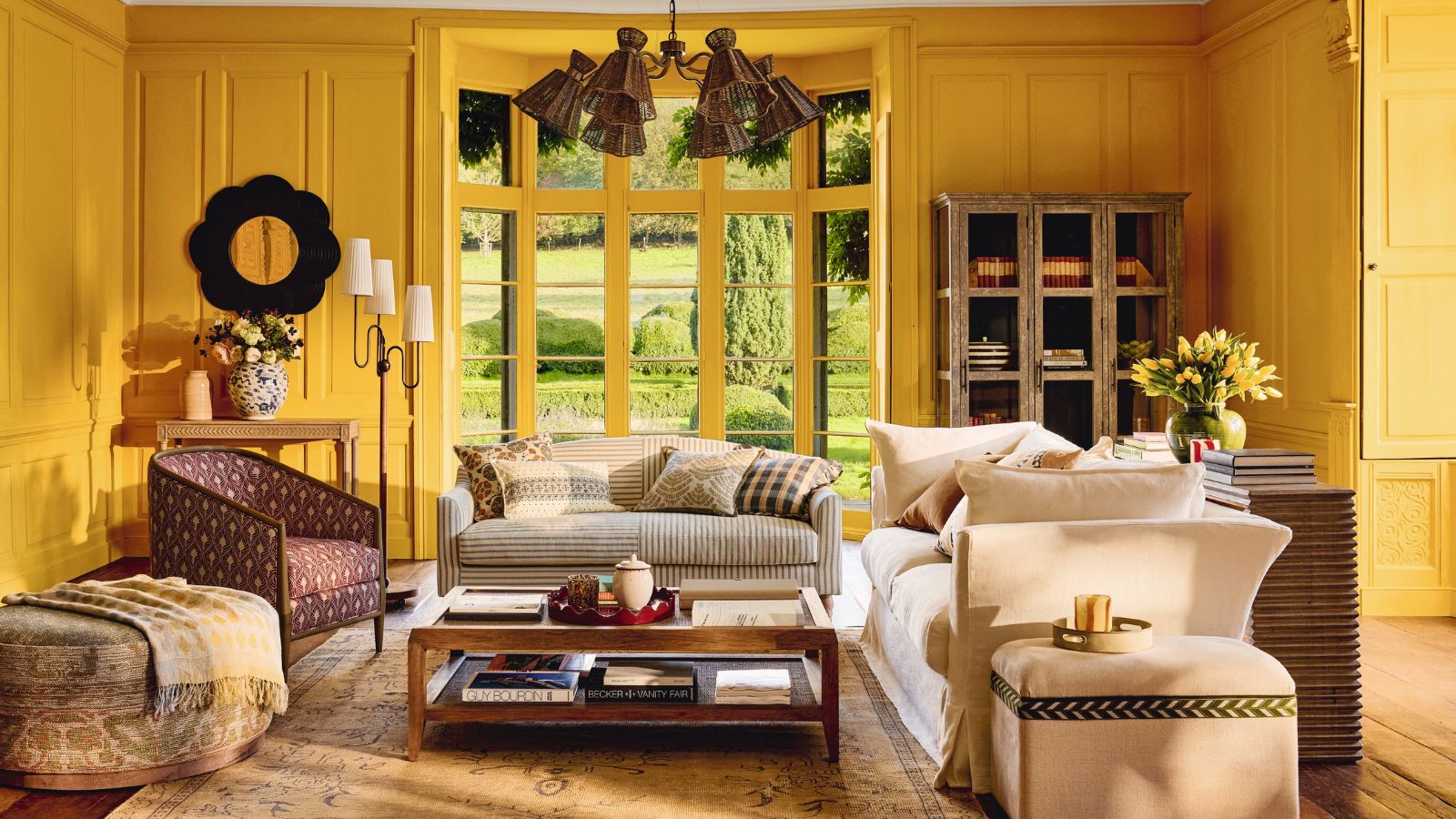 I’m an HVAC technician, and this is when I turn on my AC each year – plus 5 checks I always do beforehand
I’m an HVAC technician, and this is when I turn on my AC each year – plus 5 checks I always do beforehandSave yourself an AC hassle by running my checks and turning it on before big heat hits
By Josh Mitchell Published
-
 6 things you should never throw in the trash – and what to do for safe disposal instead
6 things you should never throw in the trash – and what to do for safe disposal insteadFrom batteries to space heaters, experts reveal what not to throw
By Andy van Terheyden Published
-
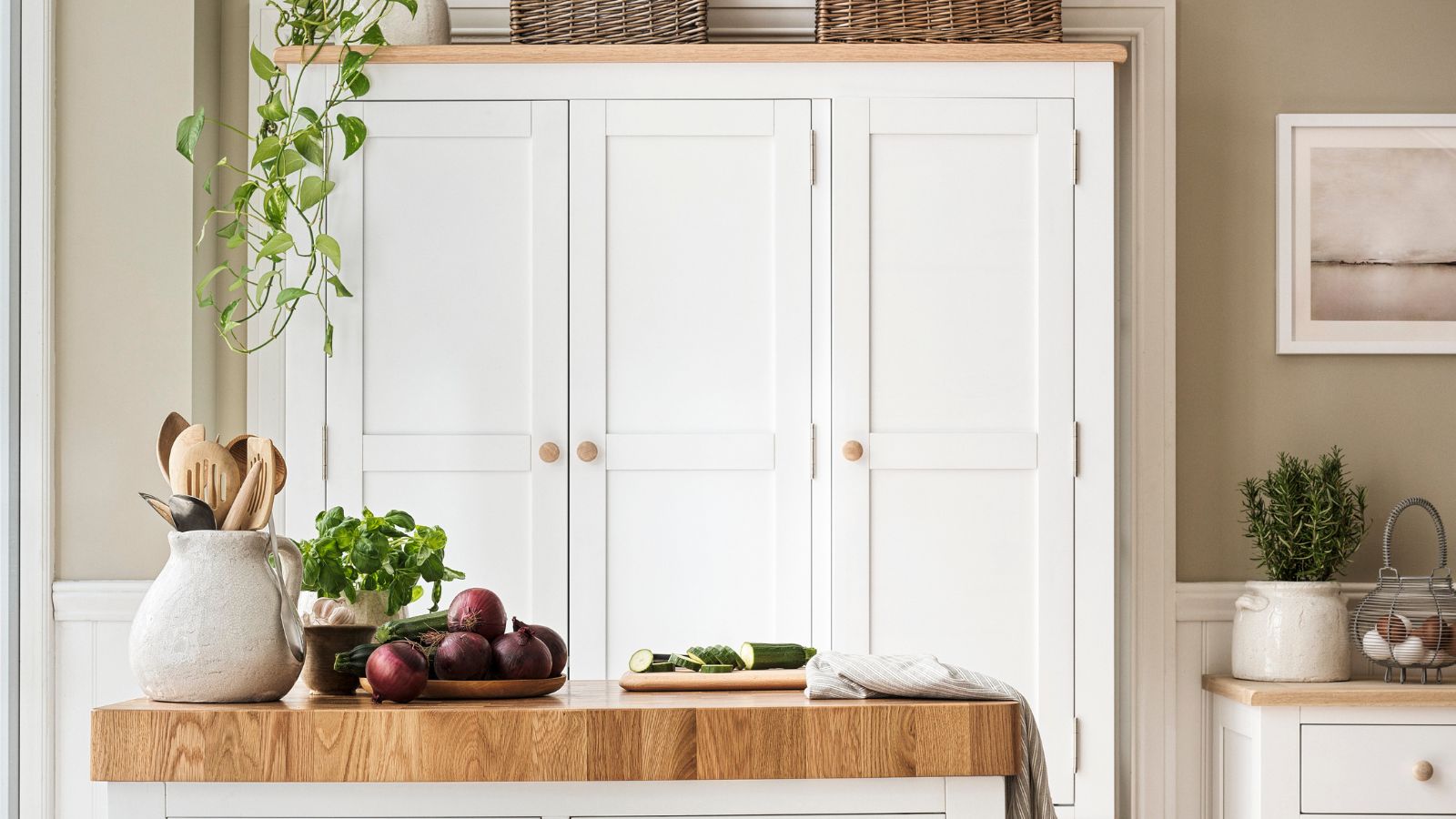 7 spring home maintenance mistakes to never make – overlooking these now can lead to pest problems and structural damage
7 spring home maintenance mistakes to never make – overlooking these now can lead to pest problems and structural damageHome improvement pros share common mistakes and what to do instead
By Eve Smallman Published
-
 10 common but little-known HOA fines to watch out for – and how to avoid them
10 common but little-known HOA fines to watch out for – and how to avoid themFrom sprinklers to garage doors and external pipes, your HOA contract may leave you open to a fine
By Eve Smallman Published
-
 I’m a homes editor and these are the 4 vital storage items I’m 'adding to cart' this spring – and why you should too
I’m a homes editor and these are the 4 vital storage items I’m 'adding to cart' this spring – and why you should tooI've learned a few hard lessons in recent weeks and these storage solutions will help
By Punteha van Terheyden Published